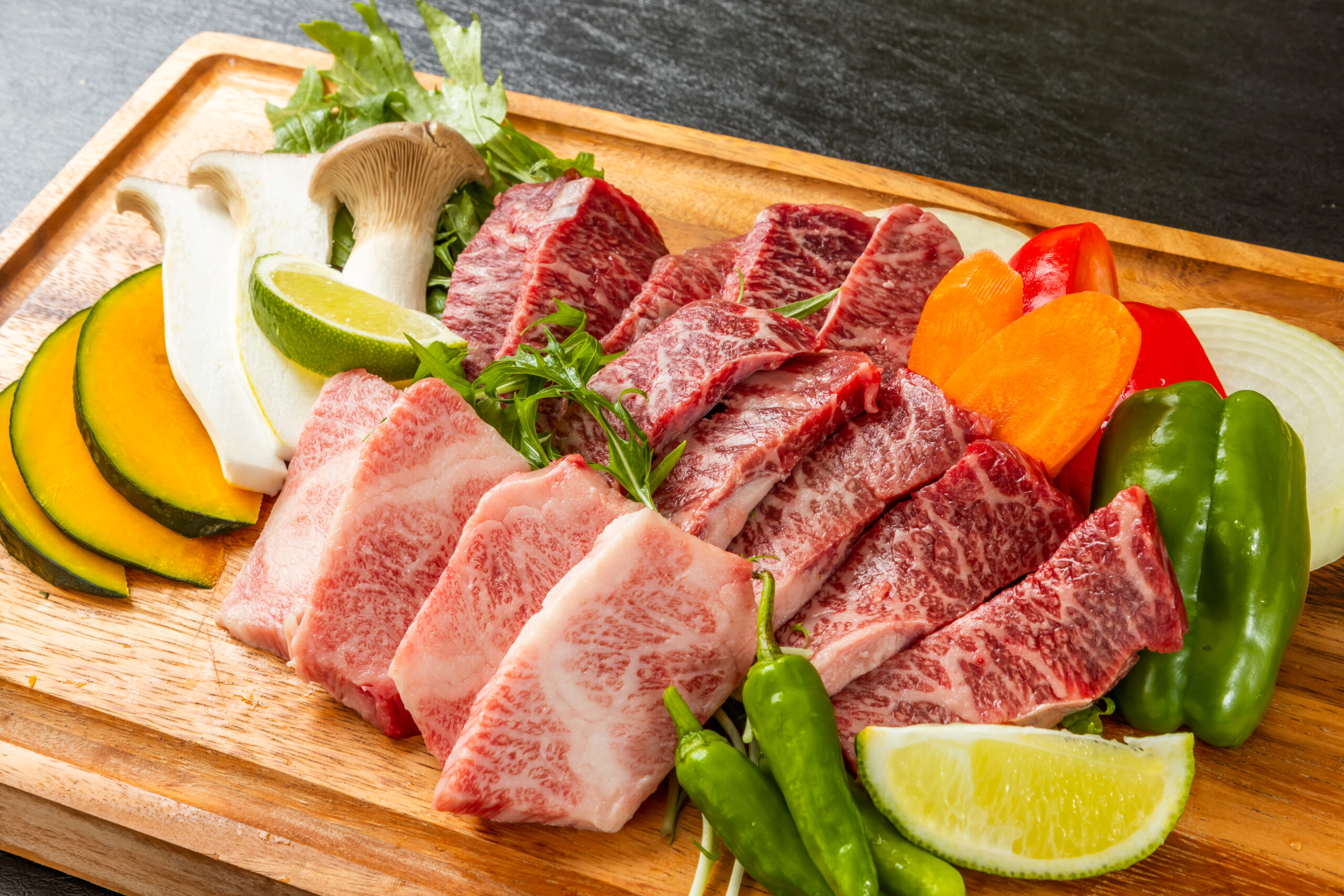Some of the links on this page are affiliate links, which means that Buzzy Kitchen earns commission from purchases made – at absolutely no extra cost to you. Thank you so much for supporting Buzzy Kitchen!
Since the reintroduction of imported Wagyu beef in the UK back in 2015, it has become one of those luxury, must-try-at-least-once foods that everyone’s talking about. But what is Wagyu beef? And what makes it so expensive?
If you have questions about this meat-eater’s treat, you’ll find the answers right here.
What is Wagyu Beef?
Why don’t we kick things off with the basics?
Wagyu is a type of beef also known as wagyū and occasionally wagyou. It is sometimes referred to as a type of “champagne” or “Ferrari” meat – the best of the best. (And super expensive!)
Wagyu meat comes from one of four types of Wagyu cattle:
- Japanese Black (the most common Wagyu cattle in Japan, making up 90%)
- Japanese Polled (also known as hornless)
- Japanese Shorthorn (the rarest, making up less than 1%)
- Japanese Brown (sometimes known as red)
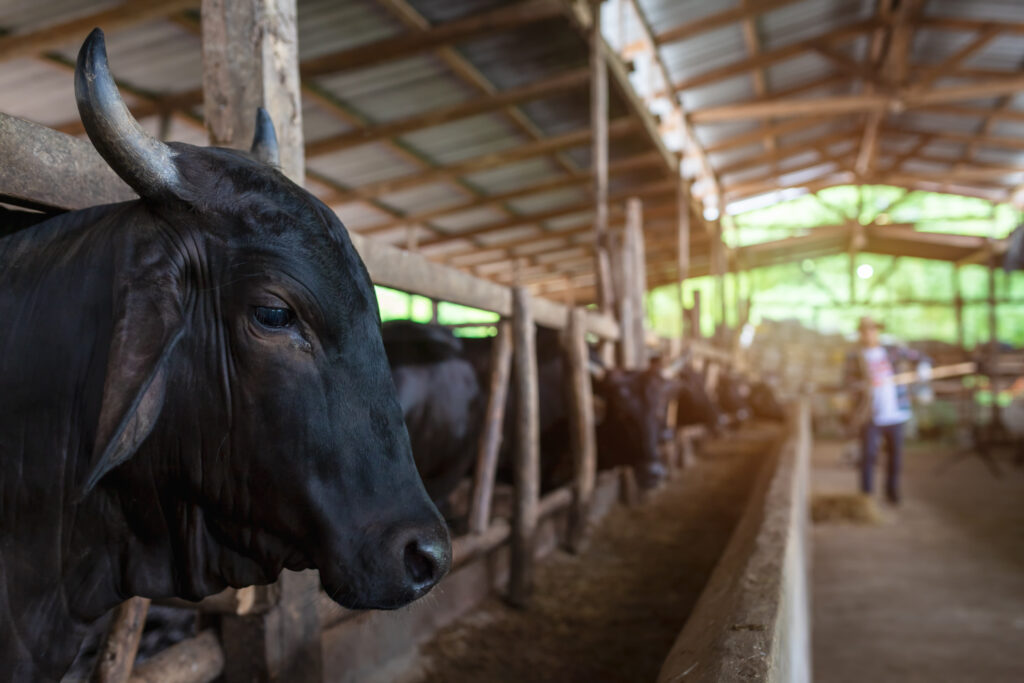
If the meat is not cut from one of those four Wagyu cattle, it can’t bear the name. Japan is VERY strict about what meat, particularly in terms of quality, makes the Wagyu cut. (So to speak.)
Wagyu is not a specific cut of beef, nor is it from a specific place; although, it is traditionally from Japan. The name is Japanese and means, quite literally, “Japanese beef”.
Wa = Japanese.
Gyu = Beef.
In fact, while we’re on the subject, let’s dive a little deeper into where this very expensive beef originates.
Where Does Wagyu Beef Come From?
As previously mentioned, this beef originally comes from Japan.
When it has come from a specific region or area of Japan, the meat will often be given the locality name. Matsusaka beef, for example, is from Japanese Black Wagyu cattle, reared in one specific region: Matsusaka in Mie in Honshu, Japan.
Wagyu cattle are not just reared in Japan these days, however. That’s where the bulk of the Japanese cattle lives, but there are herds elsewhere, including right here in the UK. It is known as “British Wagyu” when it is reared here.
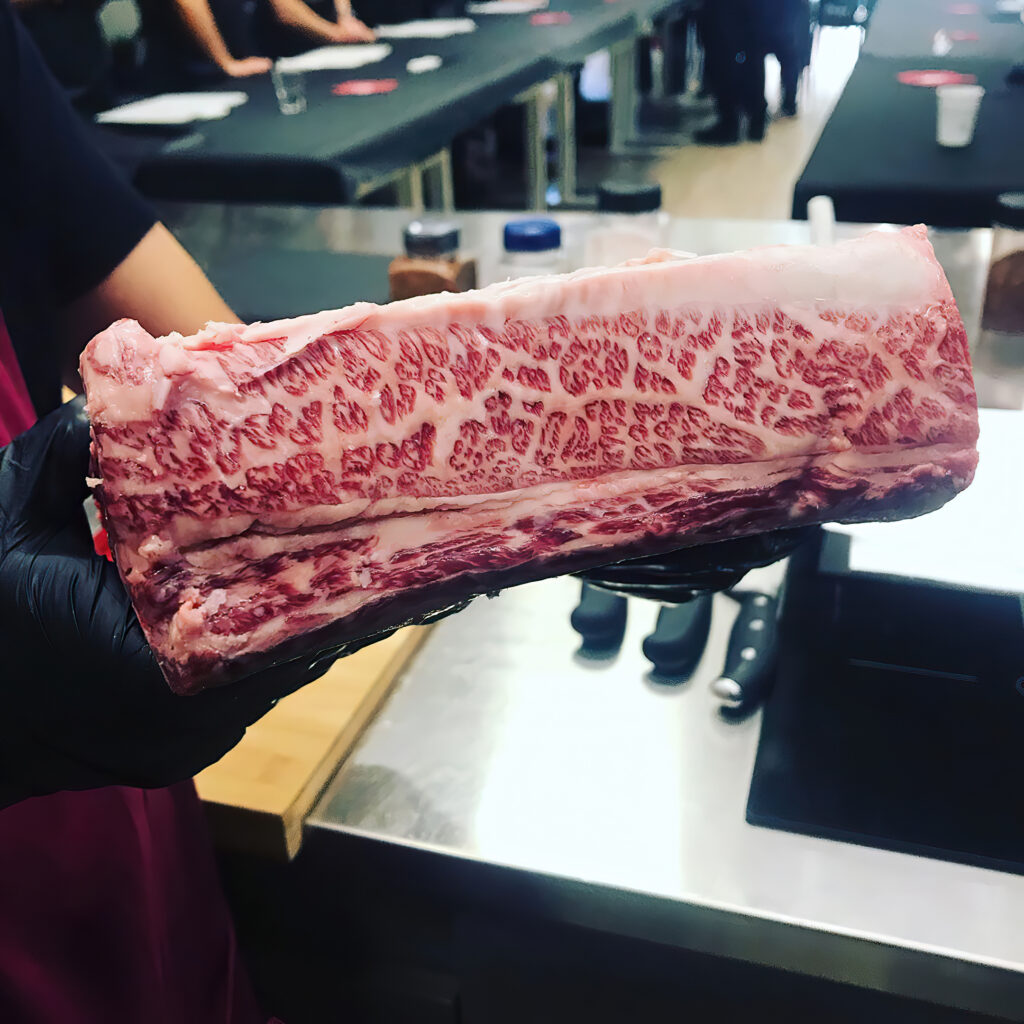
The biggest population of Wagyu cattle outside of Japan is in Australia. From there, the meat is exported to various countries, including the US, Denmark, Malaysia, China, Hong Kong, Canada, the UK, Germany, France, Taiwan, and others.
US farmers have also bred Wagyu cattle with American Angus, creating an “American-style Wagyu” hybrid, sometimes referred to as “Wangus”.
There are herds in Canada too. Canadian meat is exported to various countries in Europe, Hawaii and other US states, and New Zealand, to name but a few.
What Does Wagyu Beef Look Like?
The beef has an even distribution of fats running through the meat, referred to as marbling.
This fat melts at a lower temperature compared to other meats, and even other beef types, which gives it the melt-in-the-mouth experience it is known for.
Because of the high fat content, Wagyu looks much pinker than other beef meats, which are typically a dark red colour.
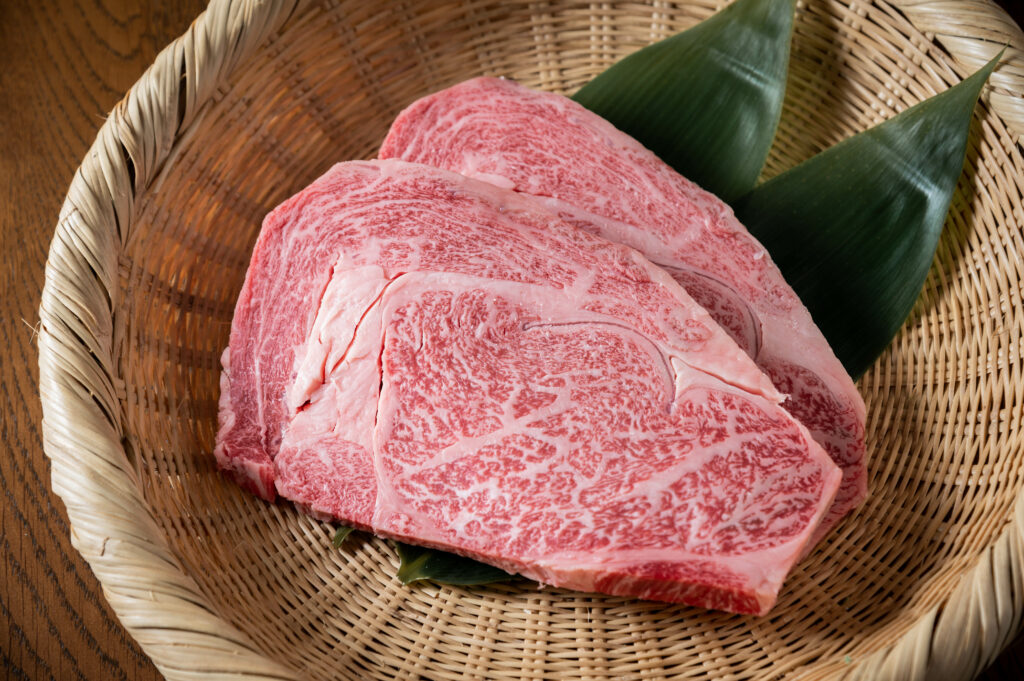
What Does Wagyu Beef Taste Like?
Wagyu beef has a succulent, buttery flavour that is often described as umami, but mild.
It’s quite unique; still beef-like, but richer and more luxurious.
Some people have noted the similarity between Wagyu beef and game meat products, but others can’t taste the resemblance. This type of beef is definitely different from other types. You would be able to tell the difference with a blind taste test, that’s for sure.
Here’s How Wagyu Is Made…
Wagyu beef isn’t made, as such, any differently from any other type of beef. It isn’t cut differently or stored differently. The raising and care of the cattle is slightly different, however.
With regular beef – the non-Wagyu kind – the cattle are usually slaughtered when they reach 18 months of age.
Wagyu cattle, on the other hand, is kept alive for quite a bit longer before slaughter: anywhere between two and three years. This gives them more time to graze and feed.
The cattle are also fed a different diet, which is more expensive because it contains more premium ingredients. The better they eat, the better the meat. (Or so it seems.)
In short, Wagyu beef takes longer to produce than regular beef, and it costs more.
Are Wagyu Cows Massaged?
It is not usual practice for Wagyu cows to be massaged.
It is usual practice for the cattle to be kept in a low-stress environment, however. As well as getting a premium diet, these cows also get a premium life!
In Japan, the cattle are almost seen as a part of the family and is treated as such. Herders and farmers do occasionally brush their cows to help boost circulation.
As a side note, it is not uncommon for some farmers to massage cattle, specifically on the legs, during the winter. This isn’t to alter the meat, however; it is to prevent the animals from suffering from cold weather ailments, such as cramp.
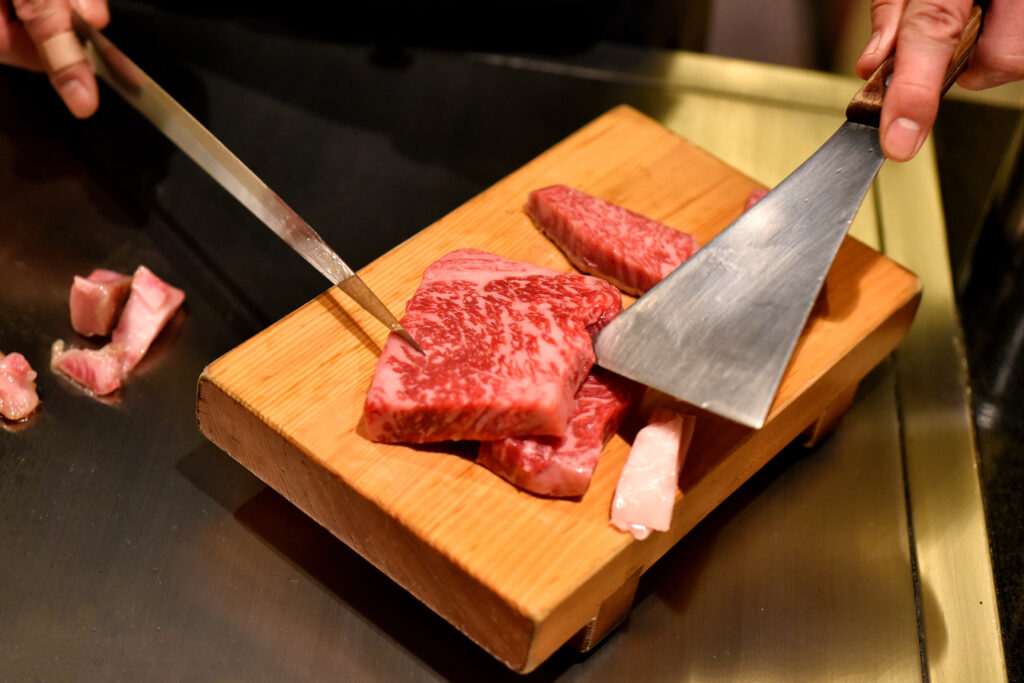
Are Wagyu Cows Fed Beer?
No, they are not typically fed beer. It is not a prerequisite.
However, some Japanese farmers have been known to try and get the cows’ appetites going during particularly hot weather using either Japanese sake or beer.
Some cattle herds around the world are fed with different things to affect the end result, too. One example of this is Tom Hixson of Smithfield. As it states in the description for Tom Hixson Wagyu flank steak:
“Their diet is supplemented with chocolate, which adds a touch of sweetness to the bite.”
Are Wagyu Cows Fed Alcohol?
Again, the cattle are not typically (or traditionally) fed alcohol, but some herds have had their diets supplemented with alcohol to alter the taste of the meat.
Wagyu cattle herds in Australia, for example, were fed a litre of red wine per day, mixed in with their regular high-grade feed, for around sixty days. Just as with the chocolate, the end result was said to be a sweeter, and the colour was also bolder and brighter. The meat was also said to last longer.
Are Wagyu Cows Force Fed?
No, they aren’t force fed.
They are kept for longer than other types of cattle before slaughtering, however. This enables them to feed for longer and build up the sought after marbled texture and appearance of the meat.
Can You Buy Wagyu Beef in the UK?
Yes, you absolutely can buy Wagyu beef in the UK.
I’ve seen Japanese, American, Australian, Canadian, and British types (origins).
I’ve done some hunting around and found a few reputable places for you to take a look at:
- Fine Food Specialist – American, Japanese, Australian, Chilean, fresh, frozen, steaks and joints
- Warrendale Wagyu – Largest supplier of British Wagyu beef in the UK
- Tom Hixson – Japanese A5 Wagyu sirloin, ribeye, chuck
There are herds of Wagyu cattle in the UK, imported from Japan. They have been in the country since 2008, with the meat available for public purchasing and consumption from 2011.
Up until 2015, you couldn’t buy Japanese imported Wagyu in the UK for around thirteen years, because of the meat import ban.
Why Was Wagyu Beef Banned in the UK?
Japanese Wagyu beef was banned in the United Kingdom because of Bovine Spongiform Encephalopathy concerns.
This is better known as BSE or “mad cow disease”.
During this time, other origins of the beef were still available, such as Australian and American.
The food industry has changed a little since then. Because of this, the ban was lifted, and Japanese Wagyu beef (alongside others) was allowed to be imported into the UK once again.
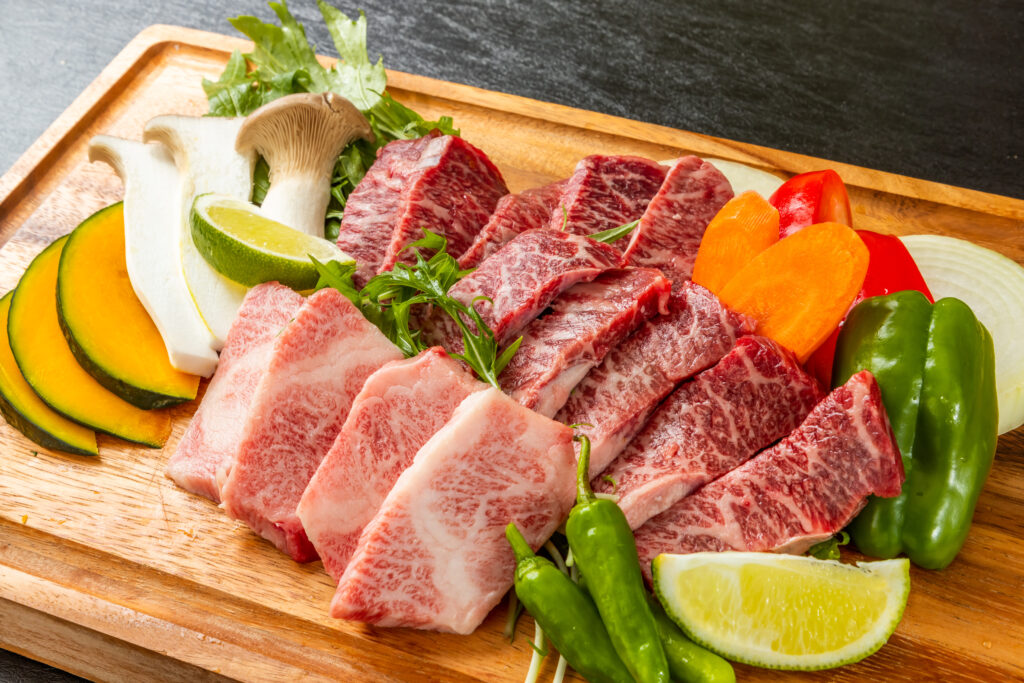
Why is Wagyu Beef So Expensive?
There are several reasons why this beef type is so expensive.
1 – Cattle are kept for longer before being slaughtered, which means they are costly. The average cow for beef is slaughtered at 18 months old, but Wagyu cows can live for up to three years first. The extra years require extra food, space, and other resources to take care of the animals.
2 – Wagyu cows are fed a much more premium diet than other beef cattle. It will, obviously, cost a lot more, which gets passed on to the consumer.
3 – Wagyu beef isn’t readily available in the UK, or elsewhere in the world. In some countries, it isn’t even grown at all; it is an import. When something isn’t easily obtained, it quickly becomes a luxury, sought after, and expensive item. That’s exactly what has happened with Wagyu beef, especially following the ban on important beef.
